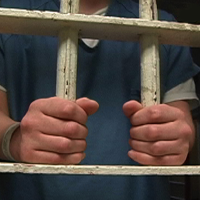Inspector General Dings Solano State Prison for “Inadequate” Medical Care

This sounds like a draw.
Investigators from California’s Office of Inspector General (OIG) found that half the 12 primary health-care-quality indicators at California State Prison Solano in Vacaville were adequate and half were not. The two secondary quality indicators (administrative) were also split.
And yet, the OIG deemed the whole mess “inadequate” and failed the prison in a report (pdf) released this week. The report, which covers what the office found in June and July, cites repeated lapses in patient care, lousy record keeping and unsanitary conditions.
Among the problems, there was no process in place for patients returning from outside hospitalization to ensure that hospital discharge summaries were seen by the registered nurse case manager and the primary care provider (PCPs). “The PCPs failed to sign and date any of the hospital discharge summaries to indicate they reviewed these documents,” the report said.
Consequently, several patients suffered “serious lapses in care.”
The prison had a problem processing reports for patients receiving specialty care. They often weren’t retrieved or put in the medical record. If the reports were retrieved they were often late.
Consequently, the risk of lapses and delays in care “markedly increased.”
Joyce Hayhoe, a spokeswoman for the federal receiver’s office, said many of the problems have been corrected. Two of the health care providers responsible for most of the reported transgressions are no longer at the prison. One was a doctor and the other a pharmacist.
California’s prison health care system has been in federal receivership since 2005.
The receivership was established (pdf) by Judge Thelton Henderson after a class-action lawsuit in 2001 over the abysmal quality of care in California prisons. The state settled the suit by promising to clean things up. The court was not satisfied with the state’s progress and revved up the receivership in 2005. Henderson put a monitor, who reported to him, in control of the system.
In 2006, the anecdotal horror stories about state prison medical conditions was quantified in a stirring way when it became known that one inmate a week was dying of treatable ailments. The new monitor proposed $8 billion in construction and renovation of medical facilities to treat prisoners, much of it to be paid for by Californians.
That didn’t happen.
But the state did spend a few billion dollars on new medical facilities and substantially increased the prison health care budget. California has 34 prisons and, so far, only the one in Folsom has been returned to the state, and that was in July.
–Ken Broder
To Learn More:
Medical Care Deemed Inadequate at 3rd State Prison (by Don Thompson, Associated Press)
Solano State Prison Is Failed by Examiners for Poor Healthcare (by Paige St. John, Los Angeles Times)
State Takes Back Control of Folsom Health Care; 33 More Prisons to Go (by Ken Broder, AllGov California)
California State Prison, Solano Medical Inspection Results Cycle 4 (Office of the Inspector General State of California) (pdf)
- Top Stories
- Controversies
- Where is the Money Going?
- California and the Nation
- Appointments and Resignations
- Unusual News
- Latest News
- California Forbids U.S. Immigration Agents from Pretending to be Police
- California Lawmakers Urged to Strip “Self-Dealing” Tax Board of Its Duties
- Big Oil’s Grip on California
- Santa Cruz Police See Homeland Security Betrayal in Use of Gang Roundup as Cover for Immigration Raid
- Oil Companies Face Deadline to Stop Polluting California Groundwater





